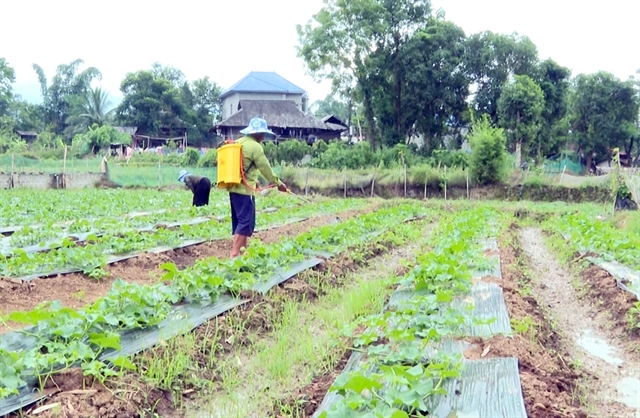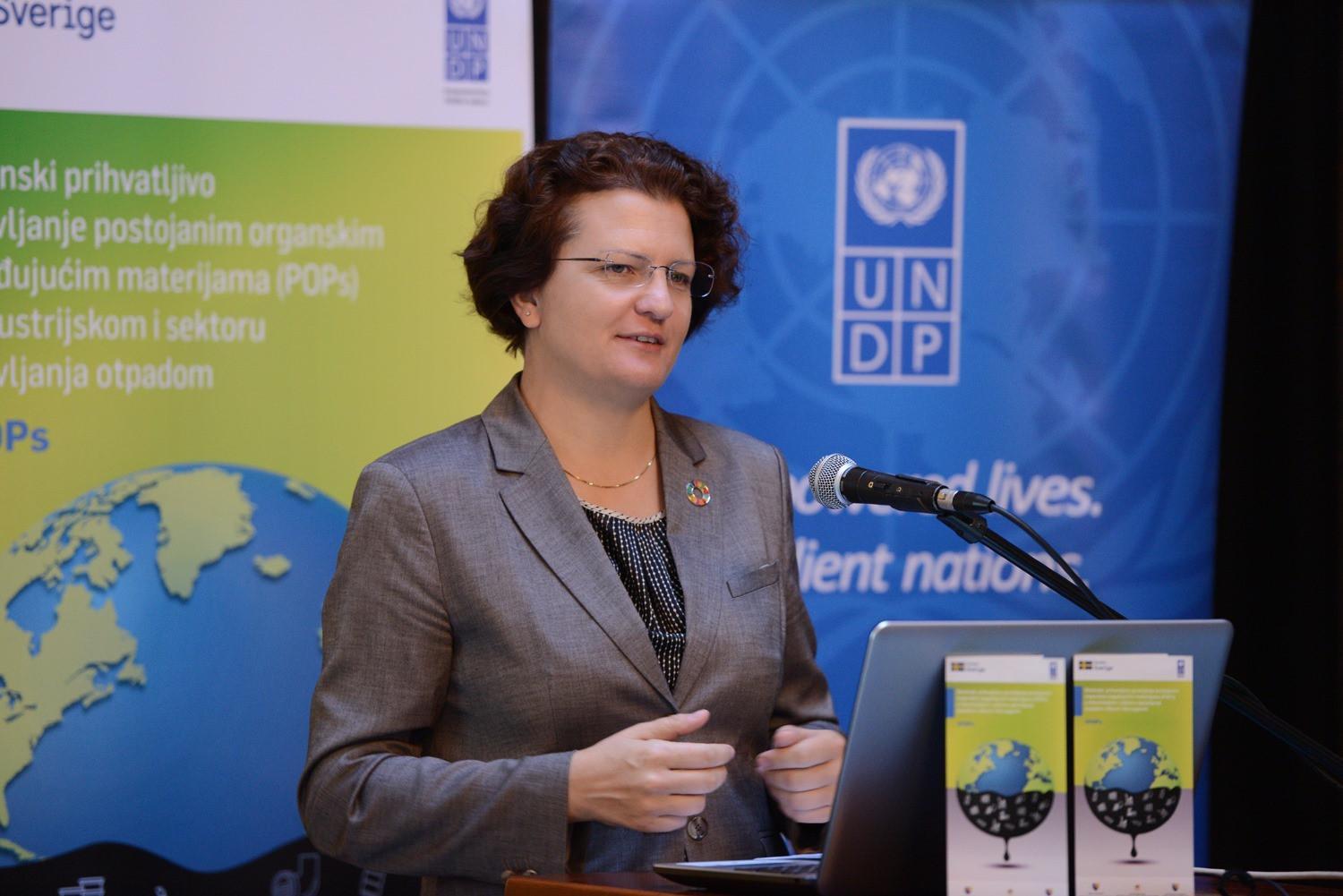Police failed to tell me about my partner’s violent past. He ended up strangling me – BBC

Report on the Efficacy of the Domestic Violence Disclosure Scheme in Relation to Sustainable Development Goals
Introduction: Assessing Institutional Failures Against SDG 16
This report evaluates the performance of the United Kingdom’s Domestic Violence Disclosure Scheme (DVDS), also known as Clare’s Law, in the context of the United Nations Sustainable Development Goals (SDGs). The scheme is designed to provide individuals with information about a partner’s history of abusive offences, thereby acting as a critical tool for protection. However, systemic failures in its implementation represent a significant challenge to achieving SDG 16 (Peace, Justice and Strong Institutions) by undermining access to justice and effective institutional safeguards for vulnerable individuals.
Systemic Delays Undermining SDG 5: Gender Equality
The failure to provide timely disclosures directly contravenes SDG 5, Target 5.2, which calls for the elimination of all forms of violence against women and girls. The case of an individual, herein referred to as Sarah, exemplifies this failure. Sarah, who was pregnant, submitted a “right to ask” application to police to ascertain if her partner had a history of abuse. She was initially informed there was nothing to disclose. Five months later, well after the abuse she experienced had escalated to include threats and physical violence, police revealed that her partner was a high-risk perpetrator known for strangling previous partners. This delay deprived her of the ability to make an informed decision to protect herself and her unborn child, directly undermining efforts to ensure gender equality and eliminate violence against women.
Analysis of Institutional Performance: A Challenge to SDG 16 (Peace, Justice and Strong Institutions)
Data obtained through a Freedom of Information (FOI) request reveals widespread non-compliance with the statutory 28-day response deadline, indicating a systemic weakness in the institutions tasked with protecting citizens, a core tenet of SDG 16.
- Of the 43 police forces in England and Wales, only 23 provided data on deadline compliance for 2024.
- Seven of these forces breached the 28-day time limit in more cases than they met it.
- An additional ten forces failed to comply with the deadline in over 25% of cases.
- Avon and Somerset Police missed the deadline in nearly 80% of its 685 disclosures in 2024.
- West Mercia Police and Wiltshire Police exceeded the 28-day limit in over 60% of cases.
These statistics demonstrate a significant failure in providing equal access to justice and highlight the need for stronger, more accountable institutions as mandated by SDG 16.
Contributing Factors to Institutional Inefficiency
Several factors contribute to the scheme’s operational failures, pointing to a need for institutional reform and resource allocation aligned with SDG 16’s objective of building effective institutions.
- Increased Demand: Requests under the scheme surged from approximately 14,000 in 2019 to nearly 59,000 in the year to March 2024, creating a significant resource burden.
- Resource Deficiencies: Police forces have reportedly been given no additional resources to manage the increased workload associated with Clare’s Law applications.
- Technological and Systemic Barriers: Fragmented police computer systems and persistent issues with information-sharing between forces hinder the efficient compilation of data, particularly when survivors move across jurisdictional boundaries.
Health and Well-being Impacts: The Neglected Dimension of SDG 3
The consequences of these delays extend beyond immediate safety, impacting the long-term health and well-being of survivors, a key focus of SDG 3. In Sarah’s case, the abuse she endured after her initial request included threats to her pregnancy, strangulation, and a final assault where she was lifted off the floor by her neck. The prolonged stress and trauma resulted in the development of chronic pain. Criminological research confirms that delays increase risks, as the scheme is most effective when accessed early in a relationship, before a perpetrator establishes control. The failure to provide timely information traps victims in abusive situations, leading to severe physical and psychological harm, contrary to the promotion of health and well-being envisioned in SDG 3.
Recommendations and Corrective Measures for SDG Alignment
Addressing these shortcomings requires a multi-faceted approach focused on strengthening institutional capacity (SDG 16) to better protect women and girls (SDG 5).
- Institutional Response: Some police forces, including Avon and Somerset, West Mercia, and Wiltshire, have acknowledged their failings and are investing in additional resources and restructuring domestic abuse support teams.
- Technological Solutions: The national policing lead for domestic abuse has indicated that automated technology is being explored to help compile necessary data more quickly.
- Government Oversight: A Home Office spokesperson affirmed that the government expects police forces to meet the 28-day deadline as part of its mission to halve violence against women and girls.
- Alternative Service Models: Academics suggest the scheme could be more effective and accessible if its public-facing component were managed by specialized domestic abuse services rather than police, potentially reaching individuals hesitant to contact law enforcement.
Conclusion: The Urgent Need for Reform to Meet Global Goals
The operational failures of the Domestic Violence Disclosure Scheme represent a critical lapse in the UK’s commitment to protecting its citizens from harm. These systemic delays directly impede progress towards Sustainable Development Goals 5 (Gender Equality), 16 (Peace, Justice and Strong Institutions), and 3 (Good Health and Well-being). The evidence indicates that without significant reform, including adequate resourcing, technological upgrades, and improved processes, the scheme will continue to fail vulnerable individuals. Urgent action is required to transform Clare’s Law into an effective, reliable, and timely safeguard that upholds the right to safety and justice for all.
Analysis of Sustainable Development Goals in the Article
1. Which SDGs are addressed or connected to the issues highlighted in the article?
- SDG 3: Good Health and Well-being: The article discusses the severe physical and psychological harm experienced by the victim, Sarah. This includes physical violence like strangulation and the long-term health impact, such as developing chronic pain due to the stress of the abuse.
- SDG 5: Gender Equality: The core theme of the article is domestic violence against a woman, which is a key issue under this goal. It highlights violence against women and girls and the systemic failures to protect them. The government’s mission to “halve violence against women and girls” is also mentioned, directly linking the issue to this SDG.
- SDG 16: Peace, Justice and Strong Institutions: The article extensively details the failures of a public institution—the police—to provide timely and accurate information under the Domestic Violence Disclosure Scheme (Clare’s Law). This relates to the effectiveness, accountability, and transparency of institutions responsible for justice and public safety.
2. What specific targets under those SDGs can be identified based on the article’s content?
-
Under SDG 3: Good Health and Well-being:
- Target 3.4: By 2030, reduce by one-third premature mortality from non-communicable diseases through prevention and treatment and promote mental health and well-being. The article connects directly to the “promote mental health and well-being” aspect. Sarah experienced manipulation and gaslighting, and the stress of the abuse led to chronic pain, demonstrating a severe negative impact on her physical and mental well-being.
-
Under SDG 5: Gender Equality:
- Target 5.2: Eliminate all forms of violence against all women and girls in the public and private spheres, including trafficking and sexual and other types of exploitation. The article provides a detailed account of various forms of violence experienced by Sarah, including psychological abuse, threats (“threatened to kick the baby out of me”), and severe physical violence (“strangled her to the point that she could not breathe”).
-
Under SDG 16: Peace, Justice and Strong Institutions:
- Target 16.1: Significantly reduce all forms of violence and related death rates everywhere. The article’s focus on domestic violence, particularly high-risk acts like strangulation, directly relates to this target of reducing violence.
- Target 16.6: Develop effective, accountable and transparent institutions at all levels. The failure of multiple police forces to meet the 28-day deadline for Clare’s Law disclosures is a clear example of institutional ineffectiveness and lack of accountability, which the article highlights with specific data.
- Target 16.10: Ensure public access to information and protect fundamental freedoms, in accordance with national legislation and international agreements. The Domestic Violence Disclosure Scheme (Clare’s Law) is a mechanism designed to provide public access to critical safety information. The article’s central theme is the failure to provide this access in a timely manner, thereby undermining a fundamental freedom to be safe and informed.
3. Are there any indicators mentioned or implied in the article that can be used to measure progress towards the identified targets?
-
For Target 5.2 and 16.1:
- Prevalence of different forms of violence: The article describes specific acts of violence against a woman by an intimate partner, including psychological abuse (manipulation, gaslighting), physical violence (punching doors, strangulation), and harassment (bombardment with text messages, emails, and phone calls). These narrative examples serve as qualitative indicators of the types of violence that need to be eliminated.
-
For Target 3.4:
- Incidence of health problems resulting from abuse: The article explicitly states that the victim “has developed chronic pain, which she attributes to the stress of her abuse,” serving as a direct indicator of the negative impact on physical and mental well-being.
-
For Target 16.6 and 16.10:
-
Timeliness of institutional response: The article provides quantitative data on police performance against the 28-day deadline for Clare’s Law disclosures. This is a direct indicator of institutional effectiveness. Specific metrics mentioned include:
- The percentage of cases where the deadline was missed (e.g., Avon and Somerset police missed the deadline in “almost 80% of cases”).
- The number of police forces failing to meet the deadline in the majority of cases (“seven forces breached the time limit in more cases than they met it in 2024”).
- The number of forces failing to meet the deadline in over a quarter of cases (“A further 10 failed to comply with the time limit in more than a quarter of cases”).
- Volume of requests for information: The increase in Clare’s Law applications from “about 14,000 in 2019” to “almost 59,000 in the year to March 2024” is an indicator of public demand for information and the scale of the institutional challenge.
-
Timeliness of institutional response: The article provides quantitative data on police performance against the 28-day deadline for Clare’s Law disclosures. This is a direct indicator of institutional effectiveness. Specific metrics mentioned include:
4. Table of SDGs, Targets, and Indicators
| SDGs | Targets | Indicators |
|---|---|---|
| SDG 3: Good Health and Well-being | Target 3.4: Promote mental health and well-being. |
|
| SDG 5: Gender Equality | Target 5.2: Eliminate all forms of violence against all women and girls. |
|
| SDG 16: Peace, Justice and Strong Institutions | Target 16.1: Significantly reduce all forms of violence. |
|
| SDG 16: Peace, Justice and Strong Institutions | Target 16.6: Develop effective, accountable and transparent institutions at all levels. |
|
| SDG 16: Peace, Justice and Strong Institutions | Target 16.10: Ensure public access to information. |
|
Source: bbc.com
What is Your Reaction?
 Like
0
Like
0
 Dislike
0
Dislike
0
 Love
0
Love
0
 Funny
0
Funny
0
 Angry
0
Angry
0
 Sad
0
Sad
0
 Wow
0
Wow
0















































































